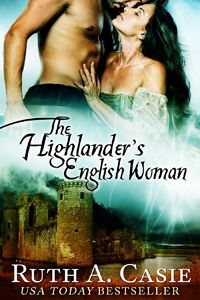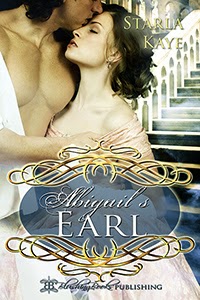“It pulls at my heart with its beauty and purpose. It
represents all I hold dear in a person, if that’s possible, heart, soul and
strength.” Laura Reynolds, The
Highlander’s English Woman
I knew I found the right setting
for my medieval ghost story when I saw a picture of Caerlaverock Castle.
Reading Caerlaverock’s history I
understood why the Maxwell family fought to hold it and why their enemies had
to destroy it.
Caerlaverock Castle is a moated
castle on the southern coast of Scotland in the Dumfries. The unique
equilateral triangular design and beauty of the castle, from the way it’s sited
to its rich history, made Caerlaverock the perfect setting for my stories, The
Maxwell Ghost and The Highlander’s English Woman.
There were several original fortifications
that preceded the current castle, a Roman fort on Ward Law Hill and a British
hill fort that was used until 950.
The earliest mention of
Caerlaverock is the 1160s, when the lands were granted to the monks of Holm
Cultram Abbey. Sixty years later, in 1220 the lands were granted to Sir John
Maxwell by Alexander II of Scotland.
The Maxwell family has owned the
Caerlaverock Castle ever since, but not without some intrigue and adventure.
The clan leader changed allegiances from Scotland to England several times
which resulted in sieges, destruction and rebuilding.
John Maxwell began construction of
the first castle at Caerlaverock. A traditional square design with a moat and a
north facing bridge, the building was one of the earliest stone castles built
in Scotland. Archeologists believe that this castle was never completed when it
was abandoned. This castle was built close to the Solway Firth. Built on clay
the wood pilings were not able to bear the weight of the structure. In
addition, the structure couldn’t be kept dry or comfortable. Today, the
foundations and part of a wooden enclosure around it is all that remains.
Work began on the new castle, six
hundred feet south of the abandoned structure in 1260.
Construction on the new (present)
castle, on a solid rock outcropping and was completed in the 1270s. The castle’s
first occupant was Herbert Maxwell, nephew of Sir John Maxwell.
Caerlaverock was the Maxwell
family’s stronghold from the 13th to the 17th centuries. It underwent several
sieges over the centuries and was finally abandoned in 1640. The castle has
been destroyed and rebuilt several times, but retained its triangular plan.
In 1299, Maxwell forces from
Caerlaverock Castle attached the English-held Lochmaben Castle. Edward I
retaliated in July 1300 and attacked Caerlaverock with 87 knights and 3,000
men. Eustace Maxwell, the clan chief repelled the English several times. In the
end, the garrison surrendered. King Edward was astounded that only sixty men
held his army off.
Caerlaverock Castle remained in
English hands until 1312 when the castle was returned to Sir Eustace Maxwell
who pledged allegiance to the English king, Edward II. Later, Eustace switched
his support to Robert the Bruce and the castle was unsuccessfully attacked by
the English.
Because of Caerlaverock’s prime
position on the England-Scottish border and the fear it could fall into the
hands of the English who would have a strong command of the district, Sir
Eustace dismantled the fortress, a sacrifice rewarded by Robert the Bruce.
In 1337 the castle was once again
inhabited and once again the Eustace changed sides. About 1355 the castle was
captured by the Scots.
The Maxwells regained Caerlaverock
after the Wars of Independence in the mid-14th century. Between 1373
and 1410, Robert Maxwell rebuilt much of the castle. His efforts were continued
by Robert II in the mid-15th century.
In 1567, the Maxwells supported
Mary, Queen of Scots and Caerlaverock was once again under siege by the English
in 1570. The Earl of Sussex led the English forces and demolished part of the
castle.
In 1593, Lord John Maxwell
repaired the castle for defense against the Johnstones of Annandale with whom
he was feuding.
The Wars for Independence were
replaced by wars of religion. In 1634, religious turmoil turned against the
Catholic Maxwells. In 1640 the Protestant Covenanter army attacked Caerlaverock
for thirteen weeks forcing the castle to surrender. The south wall and tower
were demolished and the castle was never repaired or reoccupied.
The castle passed by inheritance
to the Herries family and to the Duke of Norforlk. While currently owned by
Lady Mary Mumford’s sister Baroness Herries, since 1946 the castle has been
operated and managed by Historic Scotland. The castle remains the ancestral
home of the Maxwell family.
Buy The Highlander’s English Woman (The Stelton
Legacy)
Amazon https://www.amazon.com/dp/B01LXYHNGS/
Barnes and Noble http://www.barnesandnoble.com/w/the-highlanders-english-woman-ruth-a-casie/1125365584?ean=2940157490539
About Ruth A. Casie
Ruth has always had stories in her head. Encouraged by family and friends this
ballroom dancing, Sudoku playing, aspiring gourmet has given way to her inner
muse. Now, rather than write marketing and communications for corporate
America, she writes historical fantasies about strong men and empowered women
and how they cope with unexpected challenges. She hopes her stories become your
favorite adventures.
Ruth A. Casie Social Media



